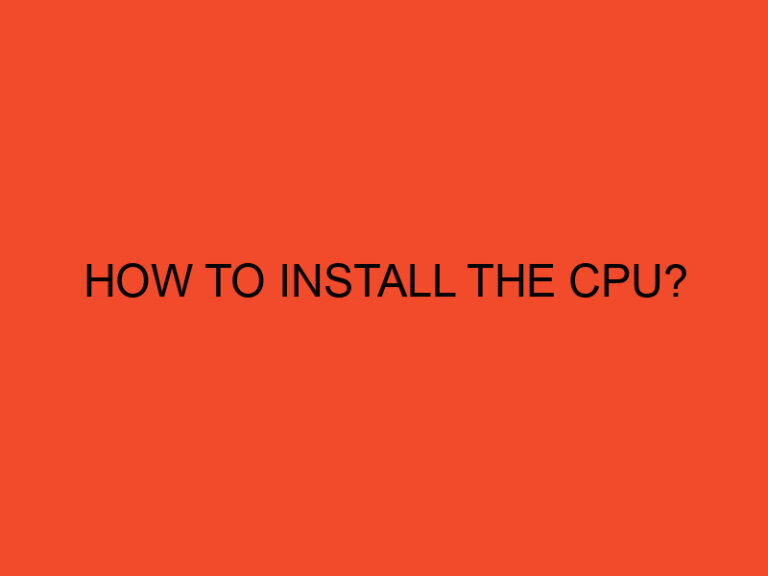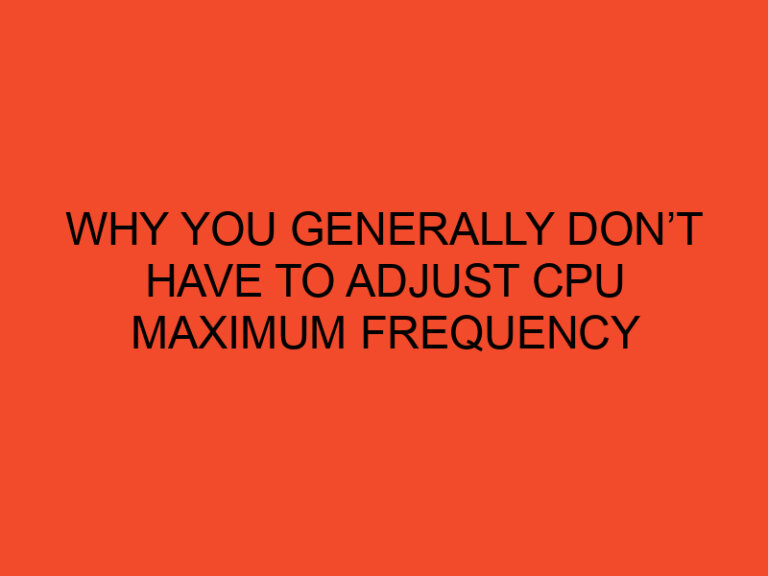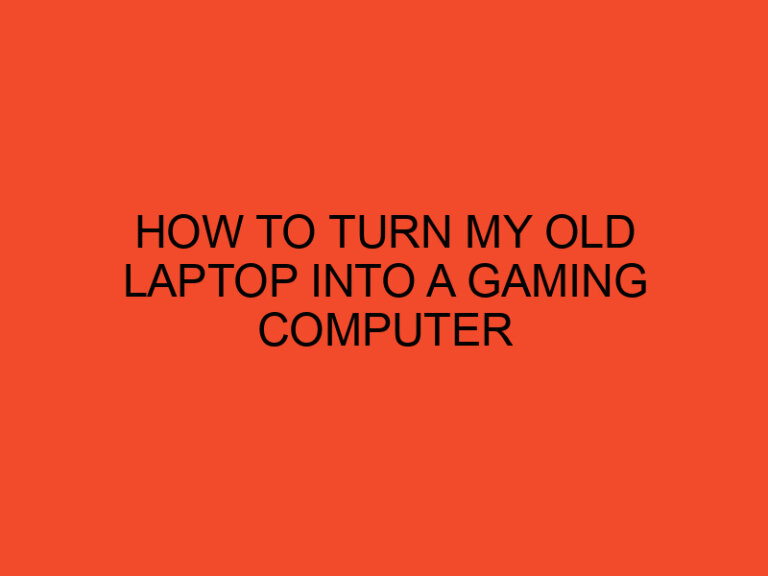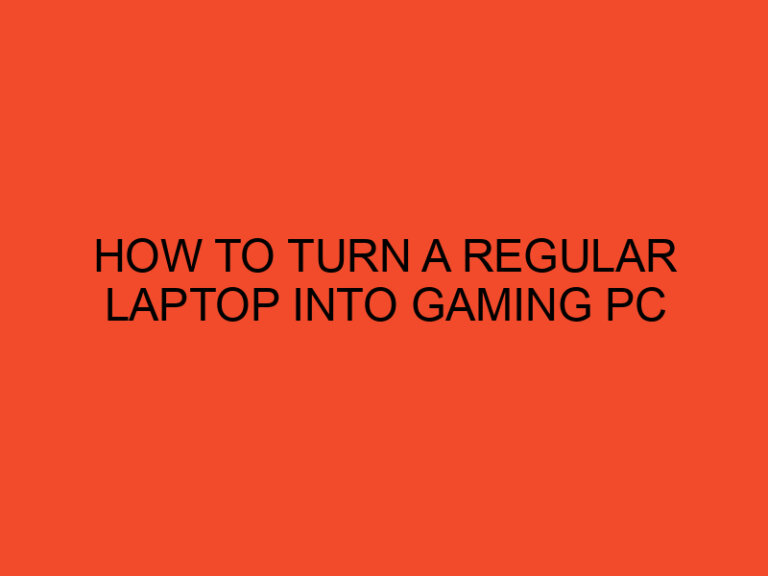GPU acceleration is a powerful technology that utilizes the processing power of a Graphics Processing Unit (GPU) to accelerate various computational tasks. Traditionally, GPUs were primarily used for rendering graphics in video games and other graphical applications. However, their capabilities extend far beyond graphics processing, and they are now being employed in various industries to speed up complex calculations and computations. In this article, we will delve into the concept of GPU acceleration, explore its applications in different fields, and understand how we can leverage its power.
Table of Contents
What is GPU acceleration
In today’s fast-paced technological landscape, the demand for faster and more efficient computing has led to the development of GPU acceleration. With their parallel processing capabilities and high memory bandwidth, GPUs have become indispensable for a wide range of applications that require intensive computations. Let’s explore the fundamental concepts of GPU acceleration and its potential applications.
Understanding GPU Acceleration
What is a GPU?
A Graphics Processing Unit (GPU) is a specialized electronic circuit that was initially designed to handle complex mathematical operations required for rendering graphics. Unlike a Central Processing Unit (CPU), which is a general-purpose processor, GPUs are specifically optimized for parallel processing tasks. They consist of thousands of smaller processing units, known as cores, that can execute multiple tasks simultaneously.
GPU Architecture
GPU architecture is designed to maximize parallel processing efficiency. Modern GPUs are built using multiple Streaming Multiprocessors (SMs), each containing numerous cores. These SMs work in parallel to perform calculations, resulting in significantly faster processing times compared to CPUs.
GPU vs. CPU
While CPUs are well-suited for sequential tasks and general-purpose computing, GPUs excel in parallel computations. GPUs can process massive amounts of data simultaneously, making them ideal for tasks like image and video processing, scientific simulations, and machine learning algorithms. By offloading certain computations to GPUs, we can free up the CPU to handle other tasks, leading to improved overall system performance.
The Advantages of GPU Acceleration
Parallel Processing
One of the key advantages of GPU acceleration is its ability to perform parallel processing. GPUs can divide complex tasks into smaller subtasks and execute them concurrently, significantly reducing computation time. This parallelism allows for faster data analysis, simulations, and calculations, enabling scientists, researchers, and professionals to achieve results more efficiently.
Enhanced Performance
GPU acceleration can provide a substantial performance boost for computationally intensive applications. By harnessing the power of multiple cores, GPUs can handle vast amounts of data in parallel, delivering faster and more responsive results. This increased performance is especially valuable in fields such as deep learning, where training complex neural networks can take weeks or even months using traditional CPU-based systems.
Energy Efficiency
In addition to improved performance, GPU acceleration also offers energy efficiency benefits. While GPUs consume more power than CPUs, their parallel architecture allows for higher throughput per watt. This means that GPU-accelerated systems can accomplish more computational tasks using the same amount of power or even less, leading to reduced energy consumption and cost savings in the long run.
Applications of GPU Acceleration
GPU acceleration has found its way into numerous industries and applications, revolutionizing the speed and efficiency of various computational tasks. Let’s explore some of the areas where GPU acceleration is making a significant impact.
Data Science and Machine Learning
Data scientists and machine learning practitioners rely on GPU acceleration to train and deploy complex models. The parallel processing capabilities of GPUs accelerate tasks such as deep learning, natural language processing, and computer vision, allowing for faster model training and inference. GPU-accelerated libraries and frameworks, like TensorFlow and PyTorch, have become essential tools in the data science community.
Financial Modeling and Simulation
Financial institutions heavily rely on accurate and efficient modeling and simulation techniques to make informed decisions. GPU acceleration enables faster risk analysis, portfolio optimization, and pricing calculations. By utilizing GPUs, financial professionals can process vast amounts of data and run complex algorithms in real-time, leading to improved forecasting and better risk management.
Video Editing and Rendering
The entertainment industry, including film production and video game development, benefits greatly from GPU acceleration. Video editing software leverages GPU processing power to handle real-time playback, complex rendering, and special effects. With GPUs, editors can work with high-resolution footage and complex visual effects without experiencing lag or slowdowns, improving their productivity and creativity.
Scientific Research and Simulations
Scientists and researchers in fields such as physics, chemistry, and biology rely on simulations to gain insights into complex phenomena. GPU acceleration enables faster and more accurate simulations, allowing scientists to analyze vast amounts of data and perform intricate calculations efficiently. This acceleration has propelled advancements in areas such as molecular dynamics simulations, climate modeling, and astrophysics.
How to Utilize GPU Acceleration
To leverage GPU acceleration effectively, certain considerations and prerequisites need to be addressed.
Hardware Requirements
GPU acceleration requires a compatible GPU with sufficient processing power and memory. High-end GPUs, such as those from NVIDIA and AMD, are specifically designed for acceleration tasks and offer superior performance. It’s important to ensure that your system meets the hardware requirements for GPU acceleration.
Programming Languages and Libraries
Developers can utilize GPU acceleration through programming languages and libraries that support parallel processing. Languages like CUDA and OpenCL provide frameworks for GPU programming, enabling developers to write code that can be executed on the GPU. Additionally, popular machine learning libraries like TensorFlow and PyTorch offer GPU-accelerated functionality out of the box.
GPU-Accelerated Software
Many software applications, ranging from data analysis tools to video editing suites, have embraced GPU acceleration. Before utilizing GPU acceleration, it’s crucial to identify and use software that explicitly supports GPU processing. GPU-accelerated software can significantly improve performance and productivity in specific tasks.
Challenges and Considerations
While GPU acceleration offers numerous advantages, there are some challenges and considerations to keep in mind.
Compatibility and Portability
GPU acceleration relies on specific hardware and software configurations. Ensuring compatibility between GPUs, drivers, and software versions is essential for seamless operation. Portability can also be a concern, as GPU-accelerated code may not be easily transferable across different platforms or systems.
Memory Limitations
GPUs have dedicated memory, and memory limitations can impact the size of data sets that can be processed efficiently. Large-scale simulations or deep learning tasks may require careful memory management and optimization strategies to avoid performance degradation.
Programming Complexity
GPU programming can be more complex than traditional CPU programming due to the need to design parallel algorithms and manage memory transfers between the CPU and GPU. Developers need to acquire the necessary skills and expertise to fully leverage GPU acceleration effectively.
Conclusion
GPU acceleration has revolutionized computational capabilities in various industries, offering faster processing, improved performance, and energy efficiency. From data science and machine learning to finance, video editing, and scientific research, GPU acceleration is driving innovation and enabling breakthroughs. By leveraging parallel processing and harnessing the power of GPUs, we can tackle complex tasks more efficiently and unlock new possibilities in the world of computing.
FAQs
What are the primary differences between GPUs and CPUs?
GPUs are specialized processors optimized for parallel processing, while CPUs are general-purpose processors designed for sequential tasks. GPUs excel in tasks that require heavy computations performed on large datasets simultaneously.
Can any computer benefit from GPU acceleration?
Not every computer can benefit from GPU acceleration. To leverage GPU acceleration, you need a compatible GPU and software that supports GPU processing. Additionally, specific tasks, such as those involving intensive computations, are more likely to benefit from GPU acceleration.
Do all programming languages support GPU acceleration?
No, not all programming languages support GPU acceleration out of the box. Languages like CUDA and OpenCL provide frameworks for GPU programming, while libraries like TensorFlow and PyTorch offer GPU-accelerated functionality for specific tasks.
What are the energy efficiency benefits of GPU acceleration?
GPUs can provide higher throughput per watt compared to CPUs. This means that GPU-accelerated systems can accomplish more computational tasks using the same amount of power or even less, leading to reduced energy consumption and cost savings.
Can GPU acceleration be used in mobile devices?
Yes, GPUs are also used in mobile devices to accelerate graphics and perform parallel computations. Mobile applications that involve image processing, augmented reality, or machine learning can benefit from GPU acceleration.





